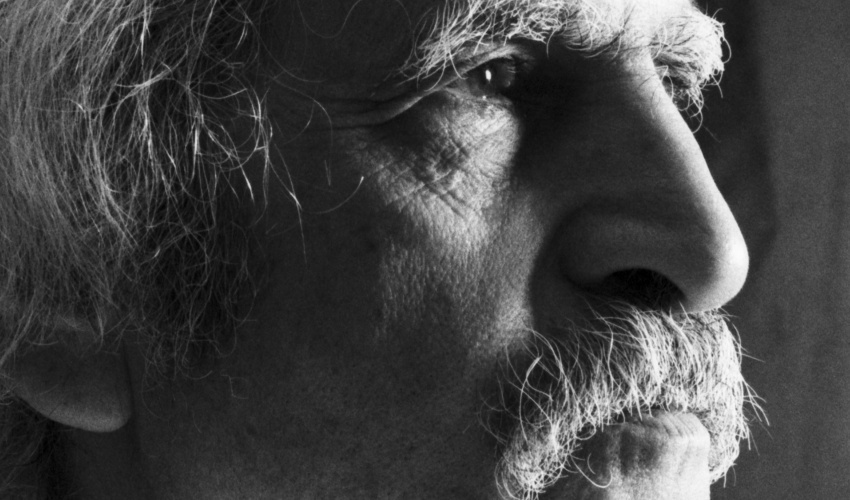The collection of Mahmoud Ruh Ol-Amini’s works

A collection of anthropological photographs by Professor Mahmoud Ruh Ol-Amini
Professor Mahmoud Ruh Ol-Amini’s collection of anthropological photos are black and white ethnographic images taken by Dr. Mahmoud Ruh Ol-Amini, a professor at Tehran University's Faculty of Sociology, from the stages of planting, growing and harvesting wheat in Kuhbenan region of Kerman. In addition to cultural study and ethnography, this collection is also worthy of attention from an artistic point of view which was donated by his wife Parvin Moghadam to Negarestan Museum Garden of Tehran University in 2011.
Anthropological photos from Kuhbenan region of Kerman
What is exhibited in the collection of anthropological photos of Professor Ruh Ol-Amini from Kuhbenan region of Kerman is evidence of thought and thousands of years of efforts of the people of this land to make a living. Digging (digging aqueducts), taking care of a series of wells, the importance of water in rural life, the role of a pool, dividing water, digging agricultural land, fertilizing and watering, plowing, sowing, weeding, crop care, harvesting, threshing, cleaning and weighing and dividing wheat, making flour, baking bread and finally eating bread are among the stages of traditional agriculture that can be shown through the images of this exhibition.
Undoubtedly, the progress and development of technology (mechanism) exposes the prosperity, validity and even the existence of ethnic traditions in all aspects and stages of social, economic and cultural life to instability, destruction, and the agricultural system is no exception to this rule. Gradually, as mechanical and advanced devices enter the field of agricultural life, the traditional production method and the traditional production tools along with it are out of the exploitation cycle. Meanwhile, ethnography, which is one of the most important research methods in anthropological studies, tries to ensure that the legacy of ideas, inventions, artifacts, and efforts of the past are not forgotten. The unity of the topic and place and to some extent the unity of the family is among the factors that led to the selection of this collection among the scattered images and documents that exist in different regions. In a comprehensive review, the researcher has studied the culture and human society of the village and while observing the techniques, customs, beliefs and rules of behavior, he has also studied their job activities.
Biography
Dr. Mahmoud Ruhol Amini was born on the 27 of September 1928 in Kuhbenan, Kerman. After completing his primary, secondary and diploma studies in Kuhbenan, Kerman and Dar-ol-Fonun in Tehran, he entered the Faculty of Literature and Humanities of Tehran University to continue his studies in Persian language and literature and graduated in 1955. In 1959, he obtained a master's degree in social sciences from the Institute of Research and Social Studies, University of Tehran. Between 1960-1968, he went to Paris to study anthropology. In 1968, he succeeded in obtaining a doctorate degree in anthropology from the Sorbonne University in France under the title of the third cycle doctorate in anthropology with the topic: an old pastoral civilization, "the problem of sheep farming in the Persian nomads of Iran", in fact: the role of sheep in the economic life of the Persian nomads from the Faculty of Literature And humanities. He became a permanent member of the Department of Sociology of Tehran University in 1969, and since then he has taught in many universities inside and outside Iran. His educational activity continued for several years after his retirement (2000).
Educational, cultural, artistic, scientific and research activities
In addition to educational activities, Dr. Ruhol Amini's life has had numerous cultural, artistic, scientific and research activities, such as the establishment of the Anthropology Museum in Golestan Palace, participation in the opening of the Hamam Ganjali Khan Anthropology Museum in Kerman and the Rural Museum of Gilan, a scientific research laboratory in the University of Tehran, authorship and translation of numerous books and the publication of research or analytical articles in domestic and foreign prestigious magazines are among them. Among the artistic activities of this educated professor and researcher is the collection of photos and images that he has depicted along with the study of human culture and society, techniques, customs, beliefs and work activities. In 2002, Dr. Rohol Amini was honored as the lasting face of Iran's anthropology in the second conference of lasting faces.
Death
Dr. Ruh Ol-Amini passed away after 82 years of fruitful life in 2010.





